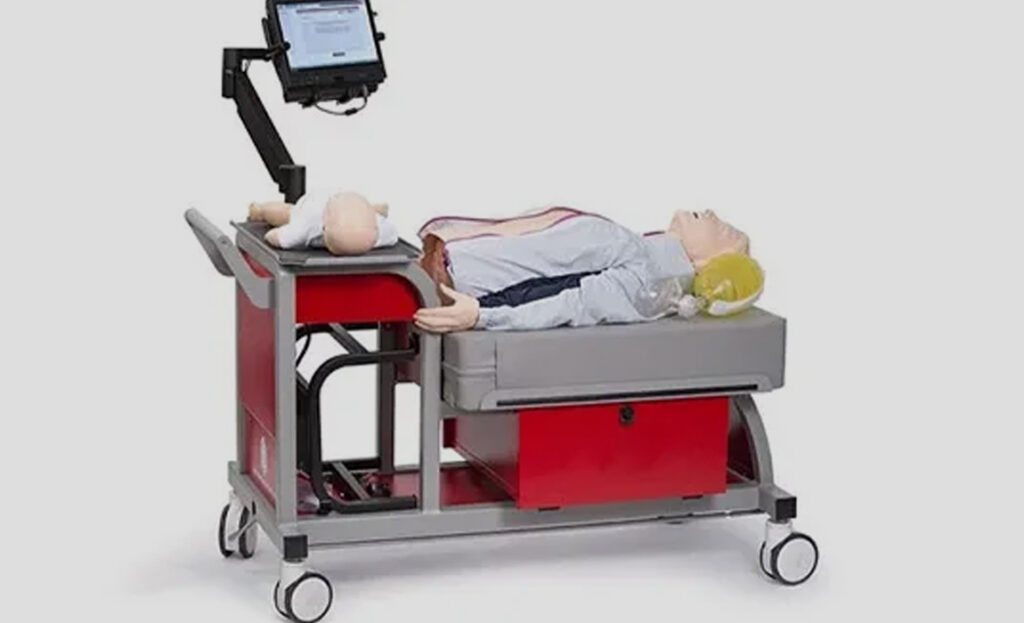Overview
Every minute, two people suffer cardiac arrest. Of those who suffer sudden cardiac arrest, only 10% survive. Based on current research, it is anticipated that the implementation of best practices can increase survival from cardiac arrest by 50%.
Hands-on training is essential in the education and certification of lifesaving techniques. Cardiopulmonary Resuscitation (CPR) skills and recertification can be required as often as every six months for healthcare practitioners; adding another task to an already overwhelming list. The use of simulated, self-guided training and aptitude testing on the CPR Skill Station allows practitioners to maintain their certifications with ease.
According to the American Red Cross Scientific Advisory Council, CPR skill retention declines within a few months of initial training – and continues to decline as time goes by. In addition, the council found that less than half of course participants can pass a skills test one year after training. This means that just one year into your two-year CPR certification, you may not remember how to help when you’re needed most.
Challenge
MPE’s customer, a leading manufacturer of medical training products, asked us to redesign the mobile platform for their CPR training mannequins. The cart needed to be movable yet remain stable during compressions.
Customer feedback on the original platform identified issues to address and a list of features that would improve the user experience on the next generation product. One area of focus was the desire to improve the stability of the platform. The rigorous, short, bursts of pressure required in CPR compressions generated instability. This was amplified by the use and placement of the casters on this mobile system.
Process
MPE’s project kick-off included the Industrial Design and Engineering teams observing and evaluating the differences between facilitated and self-instructed CPR training. One item noted was the need for increased storage and accessibility for the consumable items such as mannequin wipes and face shields.
On the bottom of the CPR skills training platform, located is a sliding bin used for storage. This sliding tray is accessible on both sides of the cart. Although during examination of the cart for redesign, this sliding bin was found to be very costly and raised the challenge of determining a more cost effective solution. Through series of brainstorming and analysis, the sliding tray was changed to a two-door bin. This two-door bin was less expensive and was overall a better design for the training platform, improving the accessibility. It even helped create a more modern look to the training platform.
Solution
Driven by human factors and ergonomics, MPE exponentially enhanced the platform to withstand the demands of weight distribution. The team redesigned the model with casters that would ensure stability and handle the weight distribution of the compressions while still being a mobile training platform. The end product combines elegance within a functional, performance based architectural form.
Results
Moving quickly from concept to prototype to market launch, MPE was able to meet the customer’s aggressive timeline and target price. This new self-guided CPR skills station is a “mobile CPR training center.” It is designed to provide staff with the opportunity to practice their CPR skills frequently. The complete system includes adult and infant mannequins and is interfaced with a computer that coaches the user’s performance. To comply with human factors, the height of the adult platform is the exact height of a hospital bed; and the infant platform is the height of incubators in hospitals.
This CPR skills station is an effective way to build competencies and prepare for real-life emergencies.
